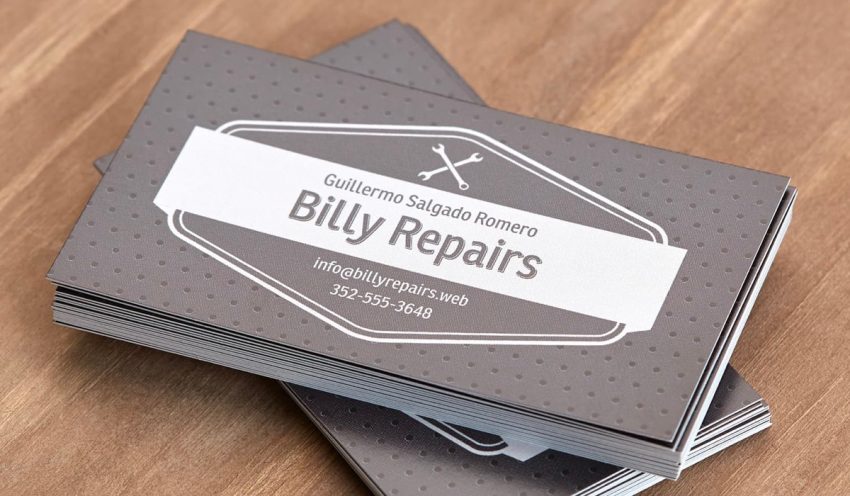Introduction:
https://thehourlytakes.com/others/craigslist-vt/ Business cards are an essential tool for networking, marketing, and creating a professional impression. They are small cards that provide information about an individual or a company, including their name, contact information, and job title. Business cards are used by professionals in various industries to introduce themselves to potential clients, partners, or employers. In this article, we will discuss the importance of business cards and how they can be designed to make a lasting impression.
Importance of Business Cards:
Business cards are an important part of networking, and they play a crucial role in creating a positive first impression. A well-designed business card can convey professionalism, competence, and attention to detail, while a poorly designed card can give the impression of unprofessionalism and lack of attention to detail. A business card is often the first piece of marketing material that a potential client or partner receives from a professional, and it should be designed with care and attention.
Business cards are also an effective marketing tool for businesses. They can be used to promote a brand, showcase products or services, and provide information about the company’s mission and values. A well-designed business card can leave a lasting impression on a potential customer or partner and increase the chances of them engaging with the business in the future.
Designing an Effective Business Card:
Designing an effective business card requires attention to detail and an understanding of the target audience. Here are some key elements to consider when designing a business card:
Layout:
The layout of a business card should be clean, simple, and easy to read. The most important information should be prominently displayed, such as the name and contact information of the professional or business. The layout should also be consistent with the company’s branding and design style.
Typography:
The typography used on a business card should be legible and consistent with the company’s branding. The font size and style should be chosen to make the most important information stand out, such as the name and job title.
Color:
Color can be used to make a business card stand out and convey the company’s branding. However, it’s important to use colors that are consistent with the company’s branding and design style. Using too many colors can make the card look cluttered and unprofessional.
Images:
Images can be used to add visual interest to a business card and showcase products or services. However, it’s important to use high-quality images that are consistent with the company’s branding and design style.
Contact Information:
The contact information on a business card should be accurate and up-to-date. It should include the name, job title, phone number, email address, and website of the professional or business. It’s also important to include any relevant social media handles.
Paper Quality:
The paper quality of a business card can also make a difference in creating a professional impression. A thick, high-quality paper stock can convey professionalism and attention to detail.
In today’s fast-paced business environment, having a business card is crucial. It provides a tangible representation of your brand and serves as a convenient way to share your contact information. Business cards have been used for centuries, and their importance has only grown in recent times.
In this article, we will discuss the importance of business cards and how they can benefit your business. We will also cover the different types of business cards and how to design a successful business card.
Importance of Business Cards:
Professionalism –
A well-designed business card exudes professionalism and shows that you take your business seriously. It is a sign of respect towards your clients and associates, and it creates a lasting impression.
Contact Information –
A business card provides all the necessary contact information, including your name, phone number, email address, and company address. It ensures that your clients can reach you whenever they need your services.
Networking –
Business cards are a great networking tool, allowing you to share your contact information with potential clients and business associates. They can also be used to introduce yourself to new people and initiate a conversation.
Branding –
Business cards are an excellent branding tool, allowing you to showcase your brand logo and colors. This helps to create a cohesive brand identity and makes your business more memorable.
Types of Business Cards:
Standard Business Cards –
These are the most common type of business cards, measuring 3.5 inches by 2 inches. They are printed on a standard cardstock paper and can be single or double-sided. Standard business cards are affordable and can be printed in bulk.
Folded Business Cards –
Folded business cards provide more space for information and can be used to showcase your products or services. They are similar in size to standard business cards but fold in half. Folded business cards are a great way to stand out from the crowd and make a lasting impression.
Die-Cut Business Cards –
Die-cut business cards are custom-shaped cards that can be cut into any shape. They are a great way to showcase your creativity and make your business card stand out from the competition. Die-cut business cards are more expensive than standard business cards but are worth the investment.
Designing a Successful Business Card:
Keep it Simple –
The design of your business card should be simple and uncluttered. Avoid using too many colors or fonts, as this can make your business card appear busy and hard to read.
Use High-Quality Images –
Use high-quality images and graphics that are relevant to your business. Low-quality images can make your business card appear unprofessional.
Include Contact Information –
Make sure to include all the necessary contact information, including your name, phone number, email address, and company address. This ensures that your clients can reach you whenever they need your services.
Showcase Your Brand –
Use your brand logo and colors to create a cohesive brand identity. This helps to make your business more memorable and creates a lasting impression.
In today’s fast-paced business environment, having a business card is crucial. It provides a tangible representation of your brand and serves as a convenient way to share your contact information. Business cards have been used for centuries, and their importance has only grown in recent times.
In this article, we will discuss the importance of business cards and how they can benefit your business. We will also cover the different types of business cards and how to design a successful business card.
Importance of Business Cards:
Professionalism –
A well-designed business card exudes professionalism and shows that you take your business seriously. It is a sign of respect towards your clients and associates, and it creates a lasting impression.
Contact Information –
A business card provides all the necessary contact information, including your name, phone number, email address, and company address. It ensures that your clients can reach you whenever they need your services.
Networking –
Business cards are a great networking tool, allowing you to share your contact information with potential clients and business associates. They can also be used to introduce yourself to new people and initiate a conversation.
Branding –
Business cards are an excellent branding tool, allowing you to showcase your brand logo and colors. This helps to create a cohesive brand identity and makes your business more memorable.




